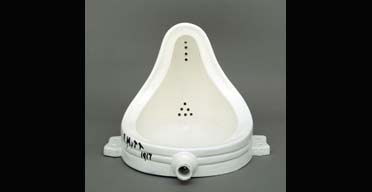segunda-feira, 25 de março de 2013
Einstein on the Beach
http://pomegranatearts.com/project-einstein/
Bob Wilson and Philip Glass and Lucinda Childs
There's a revival on tour!
Methamorphosis
Phillip Glass through Kafka's book.
In
‘Methamorphosis’ the combination of individual pieces is more complex than the
individual work. The repetition in each serial is used to create a very complex
structure. When the receptor learn to identify these repetitions (even if it’s
unconscious), he learns a new perspective that focuses on the combinatory possibilities
hidden in the melody; this isn’t, for sure, minimal. Minimal is the aesthetic.
“In a similar fashion, ‘II’ begins where ‘I’ departed, though there is something quite beautiful and heavy
about this movement that makes it outweigh its predecessor in terms of
grandeur. Serenity is a word that purely describes what may be perceived while
watching a seed germinate into a sprout, and this feeling, riddles the second
movement’s sound. Don’t be fooled by the beginning measures of ‘III’ though, despite the fact it sound
like a return toward to previous passage, it quickly runs into a syncopated
rhythmical quality, which is rather different from that of the previous themes
expressed. ‘IV’ is no exception towards this phenomenon. While the arppegiated chords
are particularly entertaining, they don’t rescue the movement’s melodic
tension. However, the tension is released as it departs, and makes its way into
the wonderful fifth passage. ‘V’
appears to be a celebration of the collection as a whole, revisiting everything
that has been expressed so far in a sort of medley, making it the best movement
to depict what Metamorphosis.”
domingo, 24 de março de 2013
sábado, 23 de março de 2013
What good are the arts?
"People in the West have been saying extravagant thing about the arts (...) The arts, its is claimed, are 'sacred', they 'unite us with the supreme Being', theu are 'the visible appearance of God's Kingdom on earth, they 'breathe spiritual dispositions' into us, they 'inspire love in the highestpart of the soul' they have a 'higher reality and more veritable existence' that ordinary life, they express the 'eternal' and 'infinitive' and they 'reveal the innermost nature of the world.' (...)
John Carey
madameisabel's purpose
Now that the Independent project is over ill use madameisabel wont lose its purpose. I'll keep it has a lab.
I'm trying to write one of the last essays at Warwick, for the composing module.
Here are the questions and the resources,
“What is minimal about Minimal art […] is the means not the ends”
Discuss this remark in relation to the work of TWO Minimalist composers.
Bernard, Jonathan W. "The Minimalist Aesthetic in the Plastic Arts and in Music" Perspectives of New Music, Volume 31, Number 1 (Winter, 1993): 86-132. Print <http://www.jstor.org/stable/
 >- Requires Athens login through University
>- Requires Athens login through UniversityFink, Robert. "Do It ('Til You're Satisfied): Repetitive Musics and Recombinant Desires." Repeating Orselves: American Minimal Music as Cultural Practice. Berkeley: University of California Press, 2005. 25-61. Print.
 <scanned>
<scanned>Greenberg, Clement “Modernist Painting” in Battcock, Gregory (ed.) The New Art: A Critical Anthology Dutton, New York 1966 availalble online at <http://www.sharecom.ca/
 >
>Johnson, Tom "The Voice Of New Music New York City 1972 – 1982: A Collection Of Articles Originally Published In The Village Voice" [NEW DIGITAL EDITION BASED 0N THE 1989 EDITION BY HET APOLLOHUIS] - <http://www.ubuweb.com/ubu/
 > (see especially “La Monte Young, Steve Reich, Terry Riley, Philip Glass” September 7, 1972, pp29)
> (see especially “La Monte Young, Steve Reich, Terry Riley, Philip Glass” September 7, 1972, pp29)Judd, Donald “Specific Objects” in Donald Judd: Complete Writings 1959–1975 (Halifax: The Press of the Nova Scotia College of Art and Design, in association with New York University Press, 1975), pp. 181–89 available online at http://road-trip.syntone.org/

McCroskey, Sandy “Dream Analysis” 1/1: The Journal of the Just Intonation Network, , Volume 6, Number 3 May 1994 available online at <http://www.melafoundation.
 >
>Morris, Robert “Notes on Sculpture” Artforum IV no.6 pp42-44 reprinted in Battcock, Gregory (ed.) Minimal Art: A Critical Anthology Dutton, New York 1968 pp222-28 available online at http://xarts.usfca.edu/~
Perreault, John “Minimal Abstracts” in Battcock, Gregory (ed.) Minimal Art: A Critical Anthology Dutton, New York 1968 pp.256-57 <in Library - N 6494.M5 - one in Learning grid, one out on loan]
Rainer, Yvonne "A Quasi Survey of Some 'Minimalist' Tendencies in the Quantita-tively Minimal Dance Activity midst the Plethora, or An Analysis of Trio A," in Battcock, Gregory (ed.) Minimal Art: A Critical Anthology Dutton, New York 1968
Reich, Steve “Music as a Gradual Process” in Writings About Music, Universal Edition, London, 1974 available online at http://www.columbia.edu/

Riley, Terry “In C” [score] 1964 http://www.otherminds.org/

Schwarz, K.Robert, "Steve Reich: Music as a Gradual Process: Part I" Perspectives of New Music Volume 19, Number 1/2 (Autumn 1980 - Summer 1981): 373-392. Print <http://www.jstor.org/stable/ 832600
 > - Requires Athens login through University
> - Requires Athens login through UniversitySchwarz, K.Robert, "Steve Reich: Music as a Gradual Process: Part II" Perspectives of New Music Volume 20, Number 1/2 (Autumn 1981 - Summer 1982): 225-286. Print <http://www.jstor.org/stable/
 > - Requires Athens login through University
> - Requires Athens login through UniversityYoung, La Monte and Marian Zazeela. Selected Writings (1959-1969) Munich: Heiner Friedrich, 1969 http://www.ubu.com/historical/
 http://www.terryriley.com/
http://www.terryriley.com/
Additionally, there are materials from the Week 3 session here - http://www2.warwick.ac.uk/fac/

sexta-feira, 22 de março de 2013
Reinventing the wheel
Reinventing the wheel
Love
it or hate it, Marcel Duchamp's urinal revolutionised modern culture in
1917. Did the 20th century's cleverest artist play a great joke on
history, asks Jonathan Jones

Marcel Duchamp's Fountain, 1917. Photograph: © Succession Marcel Duchamp/ Paris and DACS, London 2007
The object in Tate Modern is white and shiny, cast in porcelain,
its slender upper part curving outward as it descends to a receiving
bowl - into which I urinate. It's just a brief walk from here in the
fifth-floor men's loo to Marcel Duchamp's Fountain, an object sealed in a
plastic display case on a plinth that is nevertheless almost identical
to the receptacle into which I've just pissed. This museum treasure is
no more or less than Duchamp described it to his sister in a letter of
spring 1917: une pissotière en porcelaine. Duchamp warned against an
attitude of "aesthetic delectation" that would transfigure his urinal
into something artistic. Yet, as a visual form, it is bizarrely lovely,
so white and incongruously ethereal, and as art it is ... well, there's a
question already tripping me up. Is it art?
The eminent New Yorkers who ran the American Society of Independent Artists decided in April 1917 that it wasn't. The Independents congratulated themselves on championing all that was new and progressive in art, and to ensure openness to the new they agreed to the idea of one of their directors, Duchamp himself, that anyone who paid a $6 fee should be able to show in their inaugural exhibition. This meant that technically there were no grounds to refuse the mysterious R Mutt's last-minute entry of a men's urinal entitled Fountain - for he had paid his fee. An emergency meeting nevertheless rejected it.
The eminent New Yorkers who ran the American Society of Independent Artists decided in April 1917 that it wasn't. The Independents congratulated themselves on championing all that was new and progressive in art, and to ensure openness to the new they agreed to the idea of one of their directors, Duchamp himself, that anyone who paid a $6 fee should be able to show in their inaugural exhibition. This meant that technically there were no grounds to refuse the mysterious R Mutt's last-minute entry of a men's urinal entitled Fountain - for he had paid his fee. An emergency meeting nevertheless rejected it.
quinta-feira, 21 de março de 2013
Game fo Life and Dames
AND will just be possible if
everyone lose their will and knowledge. Because humans love certainty and we do
everything to find it even if it’s an illusion. The assumption that their
knowledge is good for nothing to generate an encounter it’s too scary.
AND has no end. Like the word AND
means it’s always engaging other alternatives in order to create a dialogue
with what is already there. The end of the game happens when both players agree
that the event is death.
Examples of other games in the
Squares
A
B
A is the trey of The Game of Life and B the trey of Dames.
Both are squares with 64 squares
inside. What is happening inside each of these squares are repetitions they
have one or more bodies (games pieces) moving from square to square. For those
outside that don’t know the rules of Dames or Game of Life, will see a
repetition of a repetition.
Repetition is
“
If repetition exists, it expresses at once a singularity opposed to the
general, a universality opposed to variation and an eternity opposed to the
general, a universality opposed to the particular, a distinctive opposed to the
ordinary, an instantaneity opposed to variation and an eternity opposed to
permanence. In every respect, repetition is a transgression.” - Difference and
Repetition, Gilles Deleuze
terça-feira, 19 de março de 2013
Updating
It's time to update my blog.
On 12th march I did the final experience in SU atrium.
20 hours before, i did an event on facebook, where I invited all my facebook friend to became witnesses of this experience.
I posted the text above and this Mondrian's painting:
You can keep up to date with this performance through a live webcam that records the piazza 24/7 on the Warwick website.
http://www2.warwick.ac.uk/
This performance invites warwick students to play a circular game on a square board.
Students can avoid being players but never be seen!
The facebook event
http://www.facebook.com/#!/events/122450671272276/
quarta-feira, 6 de março de 2013
Subscrever:
Mensagens (Atom)









